Do you know how to read faces… even faces with a mask on? There is a way! In this post I want to show you how you can read faces—and even body language—when the other person is under a mask.
Reading nonverbal cues has become more important than ever.
Before reading my full guide below, test yourself. Take our reading faces quiz and see if you can spot facial expressions WITHOUT a mask first. Then learn what they mean.
Microexpressions Still Work
When we talk about reading faces, we have to focus on the instrumental work of Dr. Paul Ekman. Dr. Ekman discovered the microexpression. If you want to read up on them, we have our how to read full faces guide here!
A microexpression is a brief, involuntary facial expression that appears on a person’s face according to the emotions being experienced. Unlike regular, prolonged facial expressions, it is difficult to fake a microexpression.

There are 7 universal microexpressions that people of all genders, ages, and races show. Learning to read them is crucial to spotting emotion. Below, I show each of the microexpressions with a mask, and a video of each without the mask so you can see the difference.
Fear
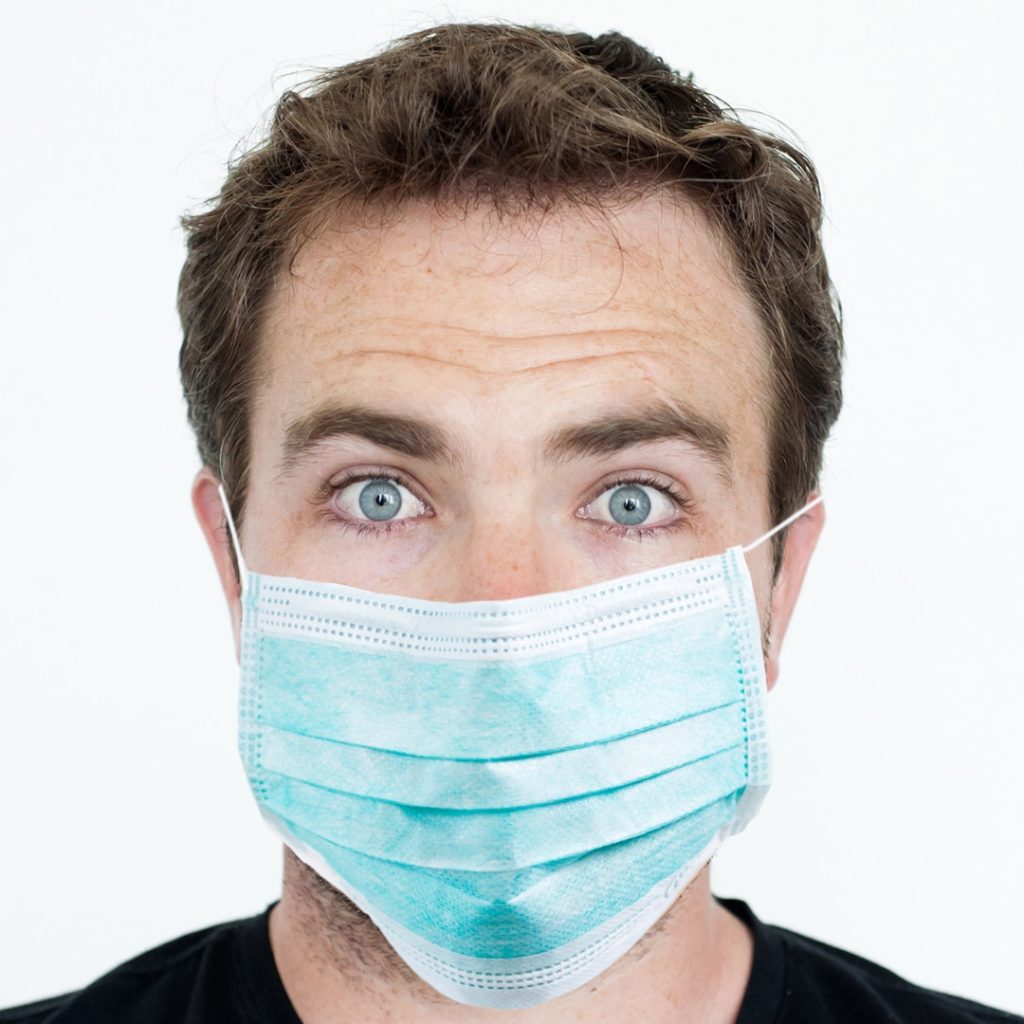
To spot fear with someone wearing a mask you want to focus on the eyes and eyebrows. Specifically look for a widening of the lids so the whites of someone’s eyes show, and their eyebrows are raised.
Here is the full fear microexpression for your reference:
Surprise

To spot surprise you also want to look at the eyebrows. Surprise is the longest expression and might even pull at the face mask. You are looking for high eyebrows in the shape of upside down U’s.
Here is the full surprise microexpression for your reference:
Note here the two side by side. Even in a face mask you would see that surprise is two upside down U’s and fear is one flat line.
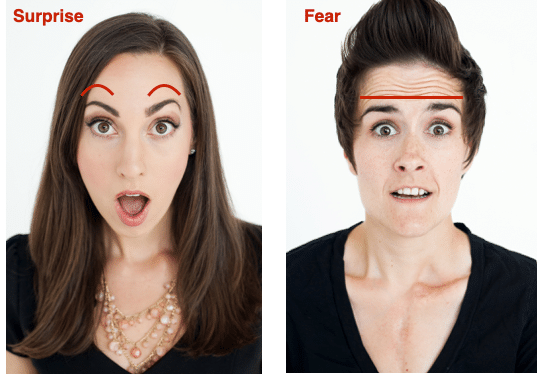
Sadness

Sadness involves a frown—which you probably will not be able to spot—and pinched eyebrows. This pinch is easy to spot and hard to fake. You might also see it with drooping eyelids.
Here is the full sadness microexpression for your reference:
Happiness
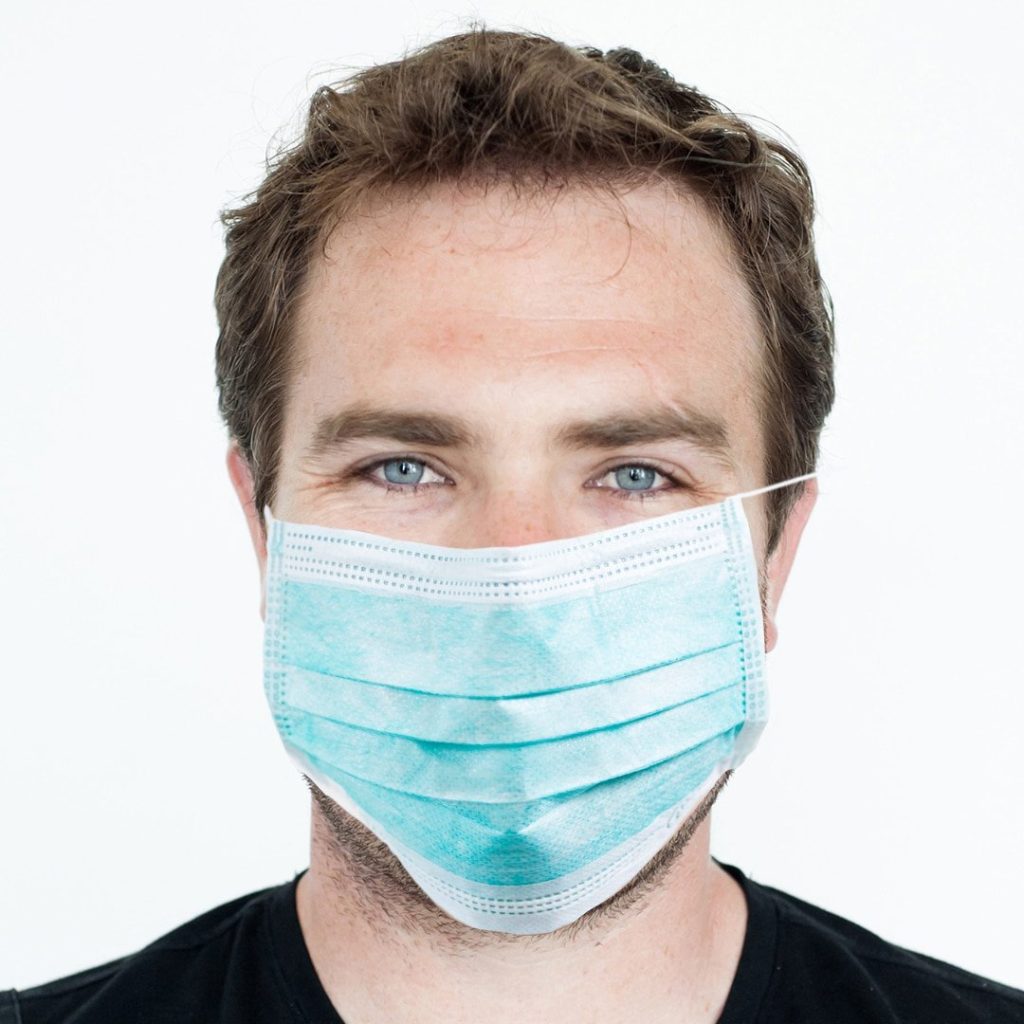
Happiness might be more accurately spotted with a face mask! Yes, really! Anyone can fake a smile, but it is very hard to activate those upper cheek muscles and crow’s feet. To spot real happiness, look right below the eyes.
Here is the full happiness microexpression for your reference:
Anger
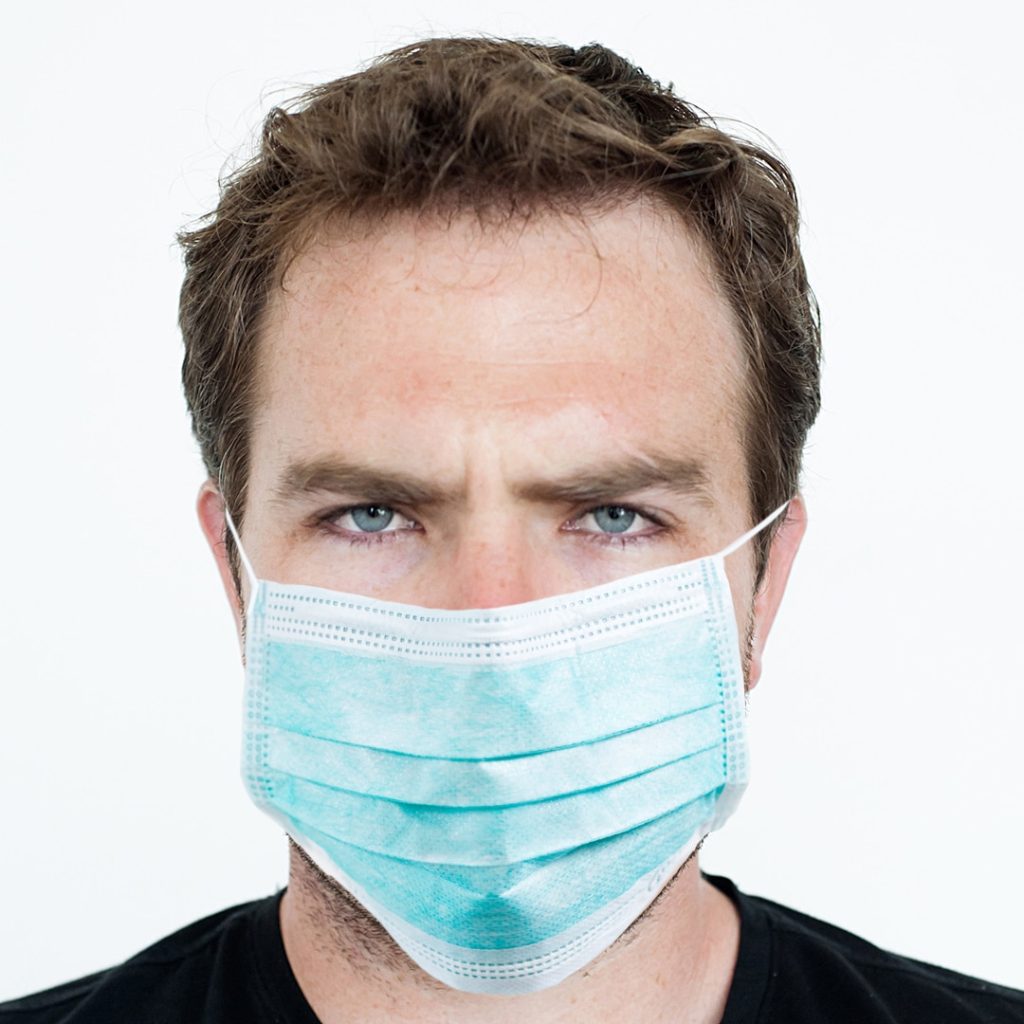
Anger is pretty easily recognizable even in a face mask–you are looking for two parallel lines in between the eyebrows. You might also see a tightening of the lids.
Here is the full anger microexpression for your reference:
Disgust
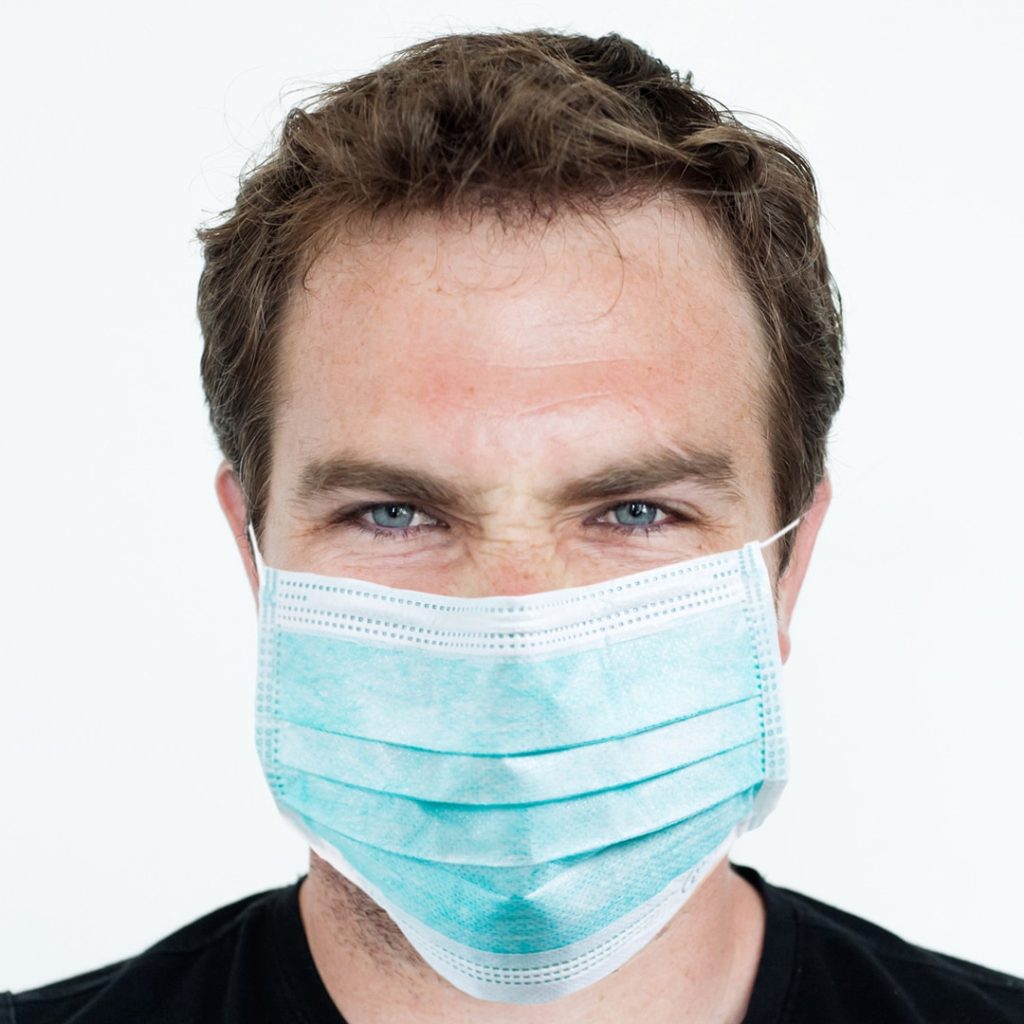
Disgust is mostly in the face and nose, so you can only see it at the very top of the nose. You are looking for nose crinkles. We pull our nose up when we are disgusted so you are looking for the top of that expression.
Here is the full disgust microexpression for your reference:
Contempt
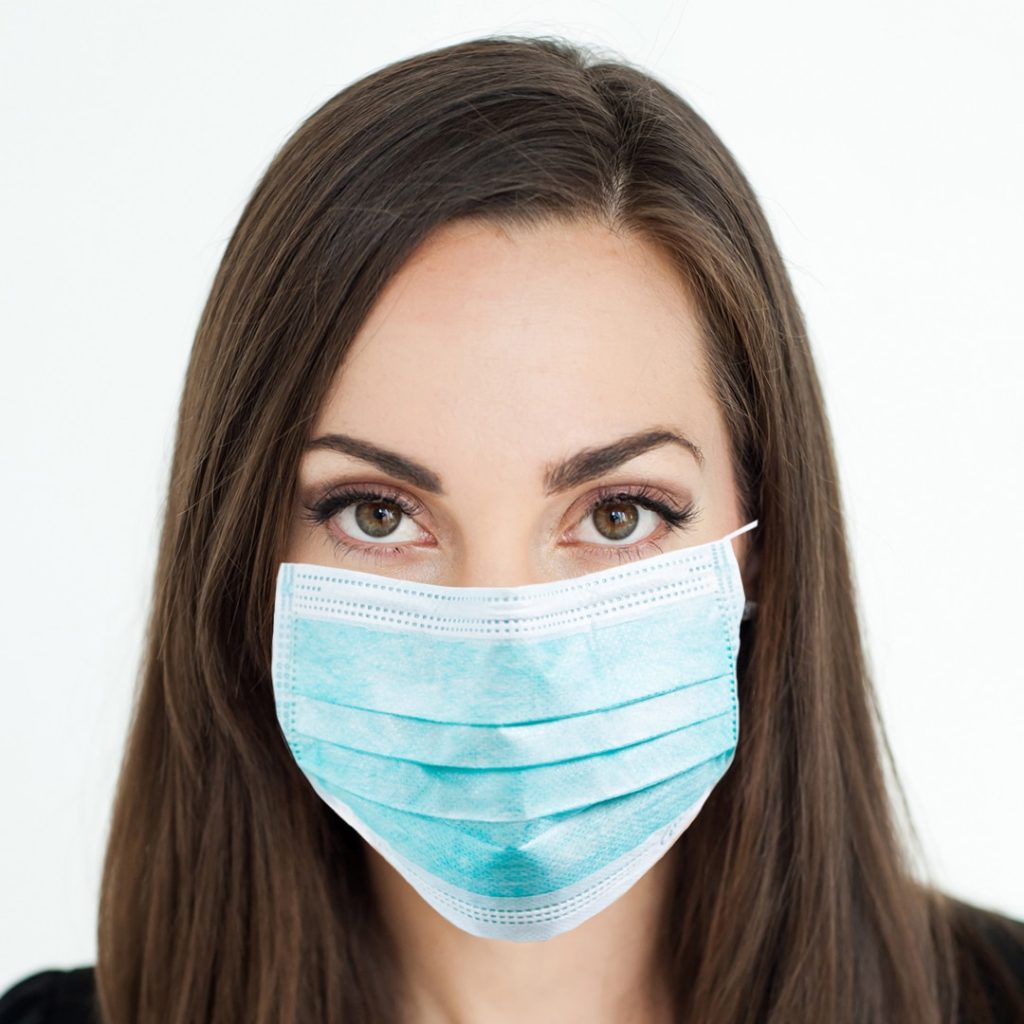
Contempt is the hardest one to spot under a mask because it is simply a one-sided smirk. So you will have to listen for a sarcastic tone of voice or distancing behavior—when someone pulls their shoulder back. You might also see someone tilt their head back and look down their nose at you.
Here is the full contempt microexpression for your reference:
Don’t forget to take the reading faces quiz above to test your face reading skills.
Body Language Matters!
Reading body language now matters more than ever. In times of uncertainty, we have to be able to read every cue we can to spot meaning and have better communication. We have so many resources on reading nonverbal cues. Watch this video next:
But please also check out my books for an in-depth look at body language and social behavior. It will even help during social distancing:
Here are some other body language cues you should know:
- The Universal Shame Gesture: When someone lightly touches the side of their forehead (either side) it is a sign of embarrassment or shame. Watch out for it!
- The Head Tilt: When we are listening to someone we expose our ear by tilting our head to the side. This is a positive cue and means someone is listening!
- Nodding: Another positive cue is when someone nods yes as they listen. This is a great way to show agreement.
And this last one comes from my body language friend and colleague, Joe Navarro: Squinting.

Squinting or hardening of the lids: We do this when we feel critical or we don’t believe someone. We often squint our eyes when we are trying to assess someone as if to see them better. It can mean:
“I don’t like what’s going on.”
“Something doesn’t feel right.”
“I disagree with what you’re saying.”
The most important thing to remember is that trying to read body language is half the battle. Most of the time we forget how important our nonverbal signals are. Paying attention to someone’s words, facial expressions, gestures and vocal tone will help you get a much clearer picture of who they are, what they are trying to say and how they feel.

Yes, I agree with you, thanks for the informative article. Nowadays it is very important to know how this or that emotion looks not only in appearance, but also to feel some energy from how it looks. I think that we need to go even further and show what this looks like in a conversation. Although, to be honest, when I came across this article, I thought that you were talking about a psychological mask and did not pay attention at all to the fact that these are absolutely basic things in recognizing emotions. I think that here we will more understand in conversation what emotion a person experiences. I think that you can read about emotion on Wikipedia (https://en.wikipedia.org/wiki/Emotion) for additional information. It will not be superfluous, especially since in the current situation, you can find a lot of useful and interesting about emotions and their component.
Yes, I agree with you, thanks for the informative article. Nowadays it is very important to know how this or that emotion looks not only in appearance, but also to feel some energy from how it looks. I think that we need to go even further and show what this looks like in a conversation. Although, to be honest, when I came across this article, I thought that you were talking about a psychological mask and did not pay attention at all to the fact that these are absolutely basic things in recognizing emotions. I think that here we will more understand in conversation what emotion a person experiences. I think that you can read about emotion on Wikipedia (https://en.wikipedia.org/wiki/Emotion) for additional information. It will not be superfluous, especially since in the current situation, you can find a lot of useful and interesting about emotions and their component.
Yes, I agree with you, thanks for the informative article. Nowadays it is very important to know how this or that emotion looks not only in appearance, but also to feel some energy from how it looks. I think that we need to go even further and show what this looks like in a conversation. Although, to be honest, when I came across this article, I thought that you were talking about a psychological mask and did not pay attention at all to the fact that these are absolutely basic things in recognizing emotions. I think that here we will more understand in conversation what emotion a person experiences. I think that you can read about emotion on Wikipedia (https://en.wikipedia.org/wiki/Emotion) for additional information. It will not be superfluous, especially since in the current situation, you can find a lot of useful and interesting about emotions and their component.
Yes, I agree with you, thanks for the informative article. Nowadays it is very important to know how this or that emotion looks not only in appearance, but also to feel some energy from how it looks. I think that we need to go even further and show what this looks like in a conversation. Although, to be honest, when I came across this article, I thought that you were talking about a psychological mask and did not pay attention at all to the fact that these are absolutely basic things in recognizing emotions. I think that here we will more understand in conversation what emotion a person experiences. I think that you can read about emotion on Wikipedia (https://en.wikipedia.org/wiki/Emotion) for additional information. It will not be superfluous, especially since in the current situation, you can find a lot of useful and interesting about emotions and their component.
Great information Vanessa , thanks!
Great information Vanessa , thanks!
Great information Vanessa , thanks!
Great information Vanessa , thanks!
I have been wearing a mask when going out to the store, and initially I was getting some hostility from those not wearing masks, and after watching this video, I had a realization that maybe I was also exhibiting a hostile expression. So now when I go out with my mask on I smile (for real) eye crinkles and all, and what I’ve noticed is a significant difference in how those without masks are responding. Thank you!
I have been wearing a mask when going out to the store, and initially I was getting some hostility from those not wearing masks, and after watching this video, I had a realization that maybe I was also exhibiting a hostile expression. So now when I go out with my mask on I smile (for real) eye crinkles and all, and what I’ve noticed is a significant difference in how those without masks are responding. Thank you!
I have been wearing a mask when going out to the store, and initially I was getting some hostility from those not wearing masks, and after watching this video, I had a realization that maybe I was also exhibiting a hostile expression. So now when I go out with my mask on I smile (for real) eye crinkles and all, and what I’ve noticed is a significant difference in how those without masks are responding. Thank you!
I have been wearing a mask when going out to the store, and initially I was getting some hostility from those not wearing masks, and after watching this video, I had a realization that maybe I was also exhibiting a hostile expression. So now when I go out with my mask on I smile (for real) eye crinkles and all, and what I’ve noticed is a significant difference in how those without masks are responding. Thank you!
Vanessa,
Thank you so much for the information! As a psychologist who works with kids and families, your descriptions and pictures of microexpressions with and without face masks was extremely useful. I provided a link to this post in our blog so hopefully families will check it out. 🙂
Vanessa,
Thank you so much for the information! As a psychologist who works with kids and families, your descriptions and pictures of microexpressions with and without face masks was extremely useful. I provided a link to this post in our blog so hopefully families will check it out. 🙂
Vanessa,
Thank you so much for the information! As a psychologist who works with kids and families, your descriptions and pictures of microexpressions with and without face masks was extremely useful. I provided a link to this post in our blog so hopefully families will check it out. 🙂
Vanessa,
Thank you so much for the information! As a psychologist who works with kids and families, your descriptions and pictures of microexpressions with and without face masks was extremely useful. I provided a link to this post in our blog so hopefully families will check it out. 🙂
Hi,
I’m a reading specialist/teacher working with children k- 5th grade. Learning to communicate with others, naming and identifying feelings, and social-emotional learning are always part of what we practice and teach in elementary schools. The pandemic has been rough in our children. Quarantine and using computers on Zoom each had their own set of challenges. Now, we have some kids in classrooms, and masks are literally creating a communication barrier. Have you thought about creating some content or videos for kids or educators? Your expertise would be greatly appreciated in schools everywhere. Kids all learn differently. When we take away the ability to see most of a person’s face, it really makes it tough to make connections and become socially and emotionally literate. I am using what I have learned from you, but it would be awesome to see what the mom part of you would share with kids.
Thanks,
Michelle B.
Hi,
I’m a reading specialist/teacher working with children k- 5th grade. Learning to communicate with others, naming and identifying feelings, and social-emotional learning are always part of what we practice and teach in elementary schools. The pandemic has been rough in our children. Quarantine and using computers on Zoom each had their own set of challenges. Now, we have some kids in classrooms, and masks are literally creating a communication barrier. Have you thought about creating some content or videos for kids or educators? Your expertise would be greatly appreciated in schools everywhere. Kids all learn differently. When we take away the ability to see most of a person’s face, it really makes it tough to make connections and become socially and emotionally literate. I am using what I have learned from you, but it would be awesome to see what the mom part of you would share with kids.
Thanks,
Michelle B.
Hi,
I’m a reading specialist/teacher working with children k- 5th grade. Learning to communicate with others, naming and identifying feelings, and social-emotional learning are always part of what we practice and teach in elementary schools. The pandemic has been rough in our children. Quarantine and using computers on Zoom each had their own set of challenges. Now, we have some kids in classrooms, and masks are literally creating a communication barrier. Have you thought about creating some content or videos for kids or educators? Your expertise would be greatly appreciated in schools everywhere. Kids all learn differently. When we take away the ability to see most of a person’s face, it really makes it tough to make connections and become socially and emotionally literate. I am using what I have learned from you, but it would be awesome to see what the mom part of you would share with kids.
Thanks,
Michelle B.
Hi,
I’m a reading specialist/teacher working with children k- 5th grade. Learning to communicate with others, naming and identifying feelings, and social-emotional learning are always part of what we practice and teach in elementary schools. The pandemic has been rough in our children. Quarantine and using computers on Zoom each had their own set of challenges. Now, we have some kids in classrooms, and masks are literally creating a communication barrier. Have you thought about creating some content or videos for kids or educators? Your expertise would be greatly appreciated in schools everywhere. Kids all learn differently. When we take away the ability to see most of a person’s face, it really makes it tough to make connections and become socially and emotionally literate. I am using what I have learned from you, but it would be awesome to see what the mom part of you would share with kids.
Thanks,
Michelle B.